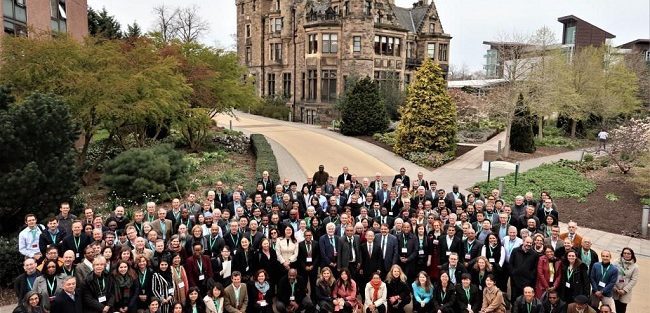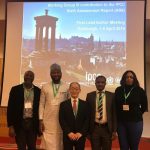n this second of a four-part series on the Intergovernmental Panel on Climate Change (IPCC), Professor Chukwumerije Okereke, IPCC author and Director, Centre for Climate Change and Development, Alex Ekwueme Federal University, Ebonyi State, Nigeria, explains how the UN body is structured and the process through which it does its work
Prof. Okereke was IPCC Lead Author for IPCC Fifth Assessment Report, and the Special Report on 1.5. He is currently Coordinating Lead Author (CLA) for the Sixth Assessment Report
By understanding how the IPCC is organised and how it works, I hope to be able to give people information that can help them to better appreciate, and potentially become contributors to the work on the IPCC.
In the first part of the series, I explained that the Intergovernmental Panel on Climate Change (IPCC) is a United Nation’s body responsible for assessing the scientific evidence related to climate change, it’s impact, and potential response options.
Since its creation in 1988, the IPCC has published five assessment reports (AR1-5) and is currently working on the Sixth Assessment Report (AR6) which is due to be published in 2021.
The IPCC is arguably the most prestigious global scientific assessment body in the world today. In 2007, the IPCC won a noble peace prize jointly with former United States Vice President, Al Gore, for its work in advancing knowledge and action on climate change. As I noted in the first article, IPCC reports have been hugely influential in shaping international co-operation and climate policy at global and national levels.
However, despite its huge popularity and acclaim, there are still many people who do not understand the structure of the IPCCC and how it works. In fact, some tend to see the IPCC as a mysterious, secret club or exclusive club which is hard to understand or penetrate. The reality, however, is that the IPCC is one of the most transparent and deliberative international organisations in the world today. The lack of understanding of the structure and process of the IPCC is a key factor preventing several countries, organisations from engaging with, making good use of IPCC reports.
A key structure of the IPCC is what we call the Woking Groups. The work of the IPCC is organised around three Working Groups (I, II, and III). In addition to the three Working Groups, there is also a Task Force on National Greenhouse Inventory. IPCC Working Group I is focused on assessing literature on the Physical Science basis of climate change. It focuses on establishing if and how much the change is changing, what is causing the change, and the extent of the change that is caused by human activities. This Working Group is heavily populated by climatologists, meteorologists, atmospheric scientists, climate and other Earth system Scientists.
IPCC Working Group II is focused on Climate Change Impacts Adaptation and Vulnerability. Here, the main concern is with understanding the way in which climate change impacts natural and human system globally. It is this Working Group that goes into detail about the impact of climate change on agricultural system, urban system, human health, etc.
IPCC Working Group II is on the Mitigation of Climate Change. The focus of this Working Group, assessing options, approaches and methods for reducing greenhouse gas emissions, and removing greenhouse gases from the atmosphere. In other words, this Working Group is concerned with how government and the society at large can best to respond to climate change.
It is Working Group III that delves into policies, international co-operation, technology innovation, political economy, and issues of justice and equity related to climate mitigation.
The Task Force on National Green House Gas Inventory is responsible for developing and updating internationally-agreed methodology and software for the calculation and reporting of national GHG emissions and removals. The Task Force also has a crucial role in encouraging the widespread use of this methodology by countries participating in the IPCC and by signatories of the United Nations Framework Convention on Climate Change (UNFCCC).
This is critical to ensure consistency, accountability and reliability in emission reduction methodology and metrics among countries all over the world.
The work of each of the Working Groups involves hundreds of scientists from all over the world has hundreds and the process of producing an Assessment Report can take up three years (see the next article in this series). The work of the Working Groups is overseen by two co-chairmen who work jointly to manage the whole process of the assessment from the scoping phase to the approval of the report (see next article).
Working Group has what is called a Technical Support Unit (TSU) that provides the much needed scientific, administrative, organisational and technical assistance necessary for functioning of the Working Groups.
One of the first things anyone wishing to participate in the work of the IPCC can do is to match his or her expertise with the remit of the Working Group and then get familiar with the activities of such a Working Group. That way, one can begin to notice the several ways of possible engagement with or contributing to the work of the IPCC (see subsequent articles in this series).
For more in-depth information on the IPCC and the work it does please see https://www.ipcc.ch/
https://www.environewsnigeria.com/getting-involved-with-ipcc-and-how-its-organised/






